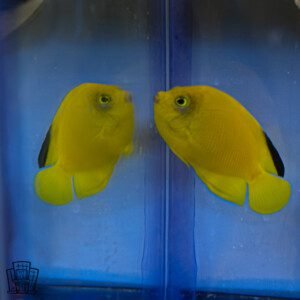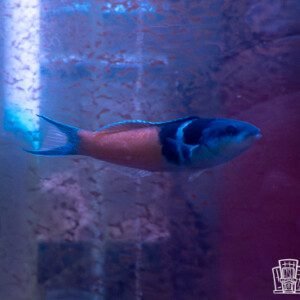Description
Scientific Name: Centropyge bicolor
Common Names: Bicolor Angelfish, Blue and Yellow Angelfish, Oriole Angelfish
Maximum Length: 6 inches (15 cm)
Minimum Aquarium Size: 55 gallons (208 liters)
Foods and Feeding Habits: Omnivorous; feeds on algae, small invertebrates, and detritus in the wild. In aquariums, offer a varied diet of algae-based flakes, spirulina-enriched pellets, frozen mysis shrimp, or finely chopped seafood. Feed 2-3 times daily in small amounts. Provide algae-covered live rock to encourage natural grazing.
Reef Safety: Not reef-safe; likely to nip at stony and soft corals, as well as clam mantles and small invertebrates. Best suited for fish-only tanks or carefully monitored reef setups.
Temperament: Semi-aggressive; territorial and may harass smaller or more docile fish, especially other angelfish or similar species. Keep singly, as multiple Bicolor Angelfish may fight unless in a very large tank.
Description: The Centropyge bicolor is a bold and vibrant choice for hobbyists who appreciate striking colors and a confident personality. Its vivid blue forebody paired with a bright yellow hindbody creates a stunning two-tone effect that instantly draws the eye in any aquarium. Aquarists are captivated by its active nature, often seen patrolling live rock or grazing on algae, asserting its presence with flair. A 55-gallon tank with plenty of hiding spots and algae-rich surfaces suits its territorial habits, while a diverse diet of algae and meaty foods keeps its colors vibrant. Though not ideal for reef tanks due to its coral-nipping tendencies, its dramatic appearance and lively behavior make it a standout in fish-only setups, perfect for experienced keepers ready to manage its spirited demeanor.
Fun Facts
- The Bicolor Angelfish’s sharp color divide, with blue in front and yellow behind, makes it one of the most visually distinct dwarf angelfish.
- In the wild, it’s often seen darting among coral heads, using its small size to slip into crevices for safety.
- This species can change from female to male, with the largest female in a group transitioning to dominate as a male if needed.





